EMERGENCE OF BRITISH EAST INDIA COMPANY AS AN IMPERIALIST POLITICAL POWER IN INDIA
Dynamically transforming early eighteenth century India had a substantially growing economy under the authority of Mughal emperor, Aurangzeb. But after his excruciating demise in 1707, several Mughal rulers established their control over the prominent regional kingdoms by exerting their superiority and political strength. Amidst such turbulent political metamorphosis, the British-syndicated East India Company emerged as a political power in India after deposing the influential regional powers and dominating over Mughal rulers. The present article attempts to analyze the reasons for emergence of British East India Company as an imperial political power in India and their diplomatic policies of territorial expansion. In addition to this, I briefly mentioned the Charter Acts (1773, 1793, 1813, 1833 and 1853) so to trace its impact on the working process of Company.
Establishment of East India Company in India
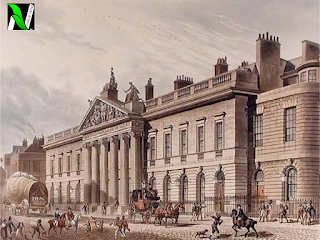
|
| Headquarter of East India company |
In 1600, ‘The Company of Merchants of London Trading into the East Indies‘, commonly called British East India Company received a royal charter or exclusive license from the Empress of England, Queen Elizabeth-l that certified its monopoly on trade with Eastern countries from the Cape of Good Hope to Straits of Magellan for fifteen years (it was later extended in 1609 without any specified time-limit). Though this license empowered this foreign company to buy goods at lower prices from the East and sell it at higher prices in Europe, it could not prohibit other European mercantile companies like French, Dutch and Portuguese to enter Eastern markets. Evidently, the prices of pepper, cardamom, cloves and cinnamon increased in Indian markets due to its tremendous demand amongst European trading groups and the profit margins of the company lessened hugely. The heightened competition in Eastern markets led to the culmination of intense professional conflicts between European companies. Eventually, these trading groups fabricated malpractices like- blocking sea-routes and sinking the rival ships etc. to secure their market.
In 1608, Captain William Hawkins reached Surat in his ship Hector and granted permission from Mughal Emperor Jahangir in 1609 to extend its business in different parts of India. The English demand infuriated the overtly-competitive Portuguese who vehemently resisted against it and the mission of erecting English factories in India failed. But Jahangir was profoundly impressed with Hawkins and therefore, he assigned him as mansabdar at the salary of Rs. 30,000. He got married to Armenian Christian lady Mubarak Shah and later in 1611, he left Agra due to the exponentially rising Portuguese influence in Mughal political affairs.
Expanding its trading activities in the southern-east coast of India near Andhra Pradesh, the first English factory was built in Masulipatnam in 1611 [The factory was temporary] with the approval of Golkonda Bahmini ruler. The English factory started progressing in certain confined territories of India but it couldn’t flourish throughout the nation. Subsequently, the British East India Company wanted to diminish the impact of Portuguese and Dutch opponents and therefore, it resorted to anti-Portuguese war in Surat called Battle of Swally in 1612. The English official Captain Thomas Best who reached the coast of Surat in his ship Red Dragon in November 1612 triumphed over Portuguese. Fascinated with Best’s courage and military skills, Jahangir issued the royal edict to the company in early 1613 for validating the establishment of permanent English factory at Surat under Thomas Aldworth.
The sole objective of evolving company during the early seventeenth century was to maximize its profits and to diminish the competition. Keeping this in mind, the marketing groups constantly persuaded the royal rulers of Eastern countries for granting business concessions so to ascertain their trading stronghold on Indian mainland. In 1615, Sir Thomas Roe, an English ambassador of King James-I reached the lavish court of Mughal emperor Jahangir seeking for such commercial concessions and privileges. Through his pragmatic rhetoric, he succeeded in winning Jahangir’s trust who eventually permitted him to solidify English factories at Agra, Ahmedabad and Broach.
Persuading the Vijayanagara ruler, the British East India Company got hold of Madras in 1939 where St. George Fort was constructed. It acted as an important headquarter on the Coromandal coast.The emerging trading company by 1947, had 23 factories widely-spread throughout India and trading posts in Surat (1619) and Madras (1639) under his direct control. Contending with frequent military forces of adversaries -Dutch and Portuguese, the political relationships with both the countries worsened to an excruciating level and henceforth the developing British Government resurrected the business relations with Portuguese by the marriage of King Charles II and Catherine of Braganza where the former advantaged and got stronghold over Bombay after 1662 that was earlier ceded by Portugal. Later, it was leased to British East India Company in 1668 but the tensions with aggressive and hostile Dutch opponents persisted….
By middle 17th century, the British East India Company had realized the necessity to broaden its business branches to Bengal that was sociopolitically and commercially prospering. Eventually, the company seeked approval of the nawab of Bengal Shah Shuja who asked for an annual payment of Rs. 3,000 instead of all duties. In 1651, the first factory in Bengal near the banks of Hoogly was established and later extended in different parts of this largest province like Kassimbazaar,Patna, Dacca and Balasore. The company kept on expanding its business activities in Bengal since it is comparitively more-profitable. By the second quarter of seventeenth century, the foreign company wanted to fortify a settlement around the factory near Hoogly so to defend themselves from rivalries,if required. But the Mughal Emperor rejected the appeal and the conflicts started between the two. By 1691, the Company started to illegally fortify around the factory near Sutanati that enraged a local zamindar Sobha Singh who revolted against it in 1698. As the result of it, company bought the zamindari of Sutaati, Gobindpur and Kalikata from their respective owners at the cost of Rs. 1200. The settlement was finally named as Fort Williams, Calcutta in 1700.
Dynamically transforming early eighteenth century India had a substantially growing economy under the authority of Mughal emperor, Aurangzeb. But after his excruciating demise in 1707, several Mughal rulers established their control over the prominent regional kingdoms by exerting their superiority and political strength. Even in such such politically unstable scenario, the company officials effectively managed to obtain several trading facilities from the influential Mughal rulers through the excellent abilities of persuasion and diplomacy; one of such significant royal concessions to the company were given through Mughal Emperor’s Farukh Siyar farman in 1717 which is known as “Magna-Carta for EIC.” It provided the Company unbridled trading powers as outlined below:
- Company was empowered to issue DASTAKS i.e. passes for transportation of their goods.
- Allowed the company pay Rs 3,000 to Bengal and Rs 10,000 to Surat annually for trading-duty free in the places with exemption of all additional taxes.
- In Hyderabad, EIC was asked to pay the existing rent for Madras only and the facility to trade-duty free was retained.
- Accepted the company minted coins at Bombay as the currency throughout Mughal Empire.
These special business concessions extended to the company were wrongly manipulated by them for gaining more profit for its expenditure which eventually led to socioeconomical paralysis of Bengal’s finance and monetary resources. It agitated the subedar of Bengal Murshid Quli Khan who strongly opposed the Company and warned it to pay its taxes and the conflicts continued till middle eighteenth century….
Foundation of British Empire in India
The argumentation between nawab of Bengal Murshid Quli Khan and EIC persisted continuously but the matters couldn’t be negotiated. Murshid Quli Khan was succeeded by Alivardi Khan in 1941 whose invasion against Marathas benefited English officials. The Company started to fortify a strong encroachment around Fort Williams, Calcutta rapidly during the ongoing conflict between Bengal and Marathas for defence purposes which apprehended Alivardi Khan who openly criticized the Company diplomacy. The tensions between both of them intensified on the magnified scale by middle 18th century.
After Alivardi’s death in 1756, Siraj-ud-daulah became the Nawab of Bengal who inherited innumerable internal rivals from his ancestral generation. Despite such insecurities, the inexperienced young king accepted his responsibilities and worked productively. He defeated his cousin, Nawab of Purnea Shaukhat Jang and later killed him in a pitching battle; he also defenestrated his commander-in chief Mir Zafar from the dignified position and appointed Mir Madan as the Prime Minister. The Company that had been constantly underscoring the authority of Bengal had now started meddling in political affairs of Bengal.
Exasperated by company’s deceit and political interference, Siraj-ud-daulah marched on English factory of Kassimbazaar on 20 June 1756 and established its control over the company’s fort. He entrapped 123 out of 146 imprisoned English people in an extremely small room who died of suffocation. Later Robert Clive headed troop fought against him and on 9 February, 1757, Treaty of Alinagar was imposed on Bengal that compelled the nawab to restore company rights granted under Mughal Emperor’s Farukh Siyar farman and approved British to fortify at Calcutta for defence reasons. This historical incident is known as “Black Hole Tragedy.“
The emerging dissatisfaction due to the Treaty of Alinagar terribly frustrated the nawab who therefore resorted to direct military confrontation against British East India Company along with his French troop at Plassey, near the banks of Bhagirathi on 23 June 1757. Clive secretly allied with internal rivals of Siraj-ud-daulah i.e. Mir Zafar, Rai Durlabh, Jagat Seth and Omnichand etc. fearlessly fought against the magnificent brave army of nawab because he was conscious about the success of his conspiracy. Eventually, the nawab of Bengal Siraj-ud-daulah was defeated and assassinated by Mir Zafar’s son, Miran. This historical battle laid foundation of British Empire in political sphere of India and it is therefore popularly known as “BATTLE OF PLASSEY.”
Post Battle of Plassey, Mir Zafar was dignified as the Nawab of Bengal as promised to him by EIC and the French competitors of the company were expelled from Bengal. The constant political-interference of the company thereafter annoyed the nawab who eventually fabricated the conspiracy with company’s competitors Dutch against English. But nothing happened in his favour and the defeat led to his defenestration from the position of nawab and later Mir Zafar’s brother-in law Mir Qasim succeeded him who was a skillful leader. Under his nawab-ship, he worked for re-designing the bureaucratic system and creating capable and strong military forces.
The company required more finance and revenue to meet the needs of business and expenditures. Even the puppet nawabs couldn’t help much. As a result of which when Mir Zafar argued, he was deposed and Mir Qasim was launched. Mir Zafar was re-launched when Mir Qasim protested.
Battle of Plassey was followed by another pitching Battle of Buxar, 1764. It was fought between British East India Company ( headed by Commander in Chief- Major Munro) and Mughal Emperor- Shah Alam, Nawab of Bengal Mir Qasim and Nawab of Awadh Shujauddaulah. The victory of EIC in this battle made them to attain political power on North India. The British East India Company achieved Diwani rights in 1765 under “Treaty of Allahabad”.
The victory in Battle of Buxar entirely changed the fortune of EIC in India. The revenue collected from India was used to finance Company business and purchase cotton and silk textile in India without any outflow of gold from Britain. But interestingly, EIC established themselves as an imperialist political power after Battle of Buxar.
Territorial Expansion with Military Attack-
•Anglo- Mysore Wars– By the second half of eighteenth century, Mysore had solidified itself as a powerful political power under the leadership of Haider Ali (1761-1782) and Tipu Sultan (1782-1799). Threatened by modernisation of Mysore with help of French, Company directly resorted to military attack and led to four famous Anglo- Mysore Wars.
- 1. Anglo- Mysore War-I (1767-1769)- The war was fought between British East India Company (accompanied with Marathas and Nizam of Hyderabad) and Haider Ali, the ruler of Mysore. It ended with the victory of Haider Ali ( first Indian ruler who defeated Britisher).
- “Treaty of Madras” was signed on 4 April, 1769 under which all conquered territories were restored. Both groups agreed to help each other in case of foreign attack.
- CHARTER ACT/ REGULATING ACT 1773 WAS INTRODUCED. Chronologically, First Anglo-Maratha War (1775-1782) was also going on.( detailed in next section)
- 2.Anglo- Mysore War-II (1780-1784)– When EIC disregarded the Treaty of Madras during the attack of Marathas on Mysore, the second war started. One of the reason was that EIC attacked on Mahe, French dominion of Haider Ali. The war was fought between English (Warren Hastings) and Haider Ali (accompanied with Marathas and Nizam of Hyderabad). In this terrifying war, Haider Ali died in 1782 and Tipu Sultan (also called Tiger of Mysore) continued it.
-
- Treaty of Mangalore was signed in 1784 under which all captured territories and prisoners were liberated.
- 3.Anglo-Mysore War- III (1790-1792)- Tipu Sultan violated Treaty of Mangalore and refused to free prisoners. Consequently, the third war started between English Lord Cornwallis ( accompanied with Maratha and Nizam of Hyderabad) and Tipu Sultan. With the defeat of Tipu, Treaty of Seringapatnam 1792 was signed under which half Mysore was seized. Both sons on Tipu were taken to hostages and Rs. 3 crore was given as war indemnity.
- CHARTER ACT 1793 WAS INTRODUCED.
-
4.Anglo Mysore War- IV ( 1799): Tipu Sultan disobeyed Treaty of Seringapatnam and final Anglo Mysore war climaxed with annexation of Mysore. Tipu Sultan died while defending his territory Seringapatnam but at the end, policy of Subsidiary Alliance was imposed.( discussed in next section).
- Anglo-Maratha Wars-After the defeat of Third Battle of Panipat(1761), Maratha power almost crushed and it resulted into the demise of Peshwa Bajirao in same year. Madhavarao succeeded him but after his death in 1772, Narainrao became Peshwa that sowed seeds of envy in heart of Ragunathrao who ultimately seeked help from EIC.
- It is interesting to note that Maratha power was subdivided into various states- Sindhia, Holker, Gaikwad and Bhonsle who were held under common Peshwa headed in Pune.
- 1. Anglo-Maratha War-I- (1775-1782)-The war was fought between English ( Governor-General Warren Hastings) and Maratha( Head- Mahaji Sindhia). British Army lost and Treaty of Wadgaon 1779 was signed under which British govt. got hold of all conquered territories. Later, Treaty of Salbai 1782 was signed under which 20 years of was established between two.
- 2. Anglo-Maratha War-II (1803-1805)-When Sindhia and Bhonsle disregarded the Treaty of Baseein 1802 (between Bajirao and British), second war initiated between English (Lord Wellesley) and Maratha(Bajirao-II). It ended into three major treaties- I) Treaty of Deogaon 1803- EIC imposed the policy of subsidiary alliance and provinces of Cuttack, Bals and west of Warda river was given to British and ;ii) Treaty of Surji-Arjunagaon 1803- led to confiscation of Bundelkhand and territories between Ganga and Yamuna.iii) Treaty of Barhanpur- The policy of subsidiary alliance was accepted by Sindias but Holkars protested.
- CHARTER ACT 1813 WAS INTRODUCED.
- 3. Anglo- Maratha War-III (1817-1818) Fought between English (Lord Hastings) and Bajirao-II led to establishment of supremacy of East India Company in India. Maratha power devastated after the war and Treaty of Mandasor(1818) was signed under which Peshwa was dethroned and Rs. 18 lacs were annually pensioned to him.
- CHARTER ACT 1833 WAS INTRODUCED.
Company’s Policies of Territorial Expansion
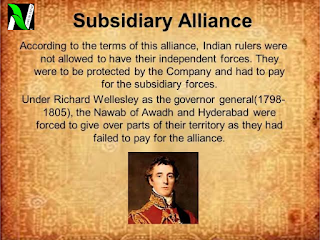
Instead of direct military invasion, EIC used political, diplomatic techniques for territorial expansion. For instance- “Policy of Subsidiary Alliance”by Lord Wellesley- the policy tends Indian rulers to accept and pay a subsidy for the maintenance of British military. It disallows rulers of India to have independent armies and force them to cede the part of their territory in case of non- payment of subsidy. Awadh( after Battle of Buxar), Mysore (after Anglo-Mysore War-IV), Bombay(after Anglo-Maratha War-IV) and Hyderabad were annexed on the grounds of this policy.
The another such policy was Lord Hastings Claim to Paramountancy. Under this policy, Company exterted its superiority to threaten Indian rulers in order to annex their kingdoms. This policy led to the annexation of Sind( 1843) and Punjab (1849).
Out of such diplomatic political techniques, the most famous was Dalhousie Doctrine of Lapse. It states that the company has the right to annex the kingdom if the respective Indian ruler died without a male heir. Applying this technique, EIC annexed Satara (1848), Sambalpur( 1850), Udaipur(1852), Nagpur(1853), Jhansi( 1854) and Awadh (1856).
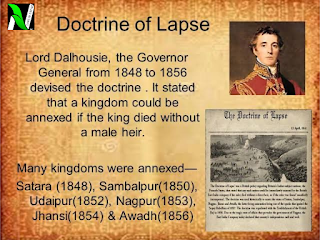
Hence, EIC metamorphosed from a trading group to an imperialist political power in India. It laid its foundation with the Battle of Plassey 1757 and thereafter the Company asserted either direct military attack or several political techniques( Policy of Subsidiary Alliance) for its constant expansion of the territorial region.

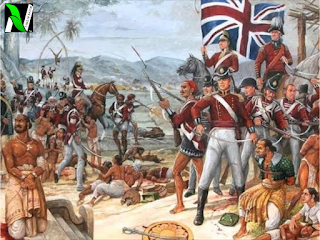

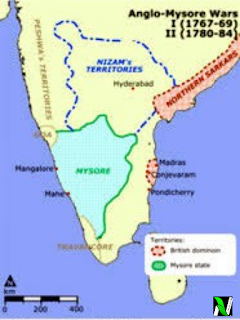


Very good , keep it up mare and more.
Very nice 👍 content
Thank you!! We'll attempt to provide you with such informative and productive content in future.
Intricately connected research!! 👌👌👌
👍👍👍👍👍